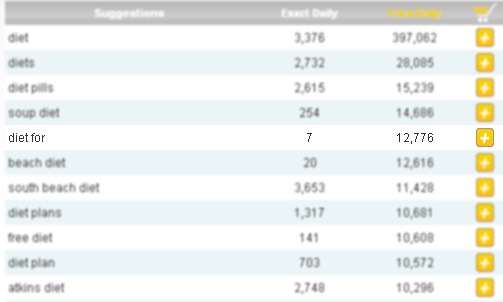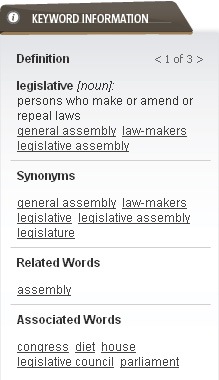Chris Boggs Elected President of SEMPOI’d like to congratulate my good friend Chris Boggs on the recent announcement of Chris being elected the new President of SEMPO. As many of you know, Chris has been deeply involved with the SEMPO organization for years and has always been an ethically outspoken and active member of the search engine optimization industry.Boggs, Director, Search Engine Optimization at Rosetta, is no stranger to SEMPO as he has served on SEMPO’s Board of Directors since 2006 and has been the organization’s Secretary for the past three years. “I appreciate the opportunity to serve as SEMPO’s new president and lead the charge to expand our reputation as thought leaders in the global search arena,” Boggs said. “I look forward to working with the SEMPO board and members to inspire more people and companies to better understand and benefit from Search Marketing and analytics.”Check out the SEO Tools guide at Search Engine Journal. Chris Boggs Elected President of SEMPO Creating a Social Media Analytics Action Plan – Part 2: Configuring Your AnalyticsLast month I introduced the idea that by creating a Social Media Analytics Action Plan, you'd find it much easier to not only find the ROI of social media for your company, but you'll also improve the effectiveness of your social media efforts.In Part 1 we defined our KPI's, and now it is time to properly configure your analytics package so you can measure those metrics. Add Campaign Tracking to URLs With URL shortening services like bit.ly and kl.am having analytics tagging capabilities built into them, there really isn't an excuse to not be tracking your social URLs. I recommend you take your URL shortening one step further. Instead of just setting up tracking URLs for each social platform, set them up for each tweet/wall post/etc. By taking the time to set up multiple tracking URLs of the same URL you plan to share on social sites, you'll be able to figure out what verbiage leads to more click-throughs and conversions, what time of day you see the most click-throughs, and other valuable insight. Create a Filter/Segment for Social Traffic This is more of a time saver than anything. Within you analytics account, setup a profile that only displays traffic from social media websites. This will allow you to quickly analyze your social efforts without having to go through a bunch of segmenting just to get the information you are looking for. Setup Virtual Pages The idea with virtual pages is that you create a vanity URL that redirects to a tracking URL. The vanity URL provides a nice clean link for the social media user to click through to, and when we redirect them (using a 301 redirect), we can track the user as they jump from that social platform to the website. This is a very similar technique to what pay-per-click marketers use. When you redirect the user, the URL of the page they land on will include your tracking information which will allow you to analyze exactly how a user from a particular social network interacts with your site. If you use Google Analytics, you can use Google's URL Builder tool to create these tracking URLs. Event Tracking Over on the Google Analytics blog, they have a fantastic case study about how Lollapalooza measured their social media efforts. What really stood out to me was how well they setup tracking on "events." An event can be any interaction with your website. It could be something as simple as a download, or even when a person registers or logins to their account. Lollapalooza also setup event tracking on their social "share buttons" so they could figure out where their social traffic would choose to share their website or if they decided to initiate Facebook Connect. Conclusion There are a number of things you can do to setup your analytics to gain additional insight into your social efforts. The key is to be meticulous, ask questions and be creative in solving them. You can learn a lot from the way you promote your website and the way your users interact with your site if you pay close enough attention. Check out the SEO Tools guide at Search Engine Journal. Creating a Social Media Analytics Action Plan – Part 2: Configuring Your Analytics Easy Step by Step Way to Use Youtube for Link BuildingNylon Magazine (and yes I know that I’m a bit too old to be reading it) has started to put a youtube link in every article in their print magazine. It’s a fantastic way to mix media and use offline methods to promote online marketing. Jamie Oliver sends out emails to his subscribers with video messages in them. This goes to (you guessed it) his youtube channel.The interesting thing about using youtube for link building is that you don’t have to think about how these links will improve your PageRank, or your Google ranking. Think about how it will build brand awareness, connect you with your community, and bring more relevant traffic to your site. If you get a boost in anything else, consider it the icing on the cake. Now, since the web abounds with information on how to use youtube, I won’t go into anything like that here. Instead, I just want to get you thinking about ways you can use this to your advantage. I’m also not talking about funneling link juice to any site, period. I’m talking about getting traffic. Here’s a quick and easy step by step way to use youtube for link building. VideosHopefully you won’t be posting videos if you have poor content. Videos should be well-produced and professional, unless your style and brand suggest otherwise. I’ve seen some really hip and edgy videos actually, and because of the hipness of the brand, they worked. Point to other web and video content in this video to keep users engaged.ChannelsA user can create a channel, or a brand can create a channel. Google has some helpful tips on creating a brand channel here. In this piece when I refer to a channel, I mean a “brand” channel. However, a user’s channel can also be a good way to build links and do some social media link building.If you have enough content, you can create your own channel and have subscribers who will be alerted to any new content that you post. By doing this, you’re staking your claim on your brandspace on one of the most popular social sites out there today. SubscribersJust as you may use a blogroll to find other good blogs to ask for a link, you can use youtube channel subscribers to do the same.CommentsVideo comments work just the same as blog comments, allowing you to locate more like-minded individuals. Be prepared to wade through loads of spammy comments in order to find some decent prospects, as nothing attracts idiotic comments like youtube.SharingYou can share youtube videos from the site. People are lazier than ever (myself included) and sharing something from the post, page, or video makes things much easier.Just as with any other method of link building, you get the good and the bad, of course. The GoodThis is a good way to connect with other like-minded users and see what THEY write about on their own sites.If someone searches for your brand or your name, your youtube channel could be listed in the SERPs. It’s another gateway into competitive analysis. The BadThis type of link building won’t work with every demographic or every niche. It may be a fantastic way to generate more traffic for a fashion site, but not a great way to get more traffic to your site about retirement benefits. Some target demographics just aren’t really using a lot of social media sites yet.Depending upon the style of video that you want to shoot, cost can be prohibitive. It’s easy enough to sit down in front of a webcam and record yourself talking about something, but producing a slick and professional video isn’t cheap. The thing is…youtube is very, very hot. It has been for ages and it’s showing no signs of slowing down. I cannot tell you the amount of time that I’ve wasted watching videos of a cat knocking something over, or rewatching clips from a music show that I went to, etc. Video is a seriously important medium right now, and it’s also a nice way to attract enough attention to get people to see your actual website. Check out the SEO Tools guide at Search Engine Journal. Easy Step by Step Way to Use Youtube for Link Building Wordpot: Another Keyword Suggestion Tool to Add to Your ArsenalMy rule of thumb as to keyword research tools is: the more the better. Various tools have different algorithms and metrics to compare and when united, you may end up with many more keyword ideas and much more inspiration than when using just one utility.This is why I never grow tired of finding and sharing new (alternative) keyword research tools, both widely popular and known to just a few. Among such new and less-known keyword suggestion utilities were free Wordstream tools and Actual Keywords – both reviewed by me last year. Today I am sharing another little keyword suggestion utility: WordPot The most widely advertised features of the tool were actually not the reason why I added it to my list of tools for brainstorming content ideas:
1. The comparison metricsWe’ve seen quite a few tools that use various metrics to let you compare the keywords and choose the ones for your needs: be it Adwords competition numbers, search volume or number of search results for the given terms used in the title of the page.WordPot has quite a unique comparison algorithm: “Exact daily” versus “Total daily” where:
You can use these numbers to see which words are more general terms than others. For example since golf has only 6938 exact searches but 696364 total searches then that makes golf a general term. So if you are trying to advertise for “used golf clubs”, you should stay away from the term “golf” in your campaign.What it basically means in my understanding is that if “total daily” is MUCH higher than “Exact” daily, the term has higher chances to occur in the word combination and you don’t want to use that standalone term. You’d better stick with some keyword combination. A good example for that is “diet for” term which according to the tool is searched 7 times a day but occurs in almost 3K search phrases daily:  2. The base word infoAnother handy option offered by the tool is the ability to see each word thesaurus info:
 3. The “Freemium”Unlike many other keyword research tools, this one offers quite an advanced free plan, so you may never need to pay and use the free plan (like myself). So just bookmark the tool and use it randomly when you are stuck and need some inspiration.Some useful info on the tool:
Wordpot: Another Keyword Suggestion Tool to Add to Your Arsenal More Recent Articles |
Tuesday, May 18, 2010
Chris Boggs Elected President of SEMPO
Subscribe to:
Post Comments (Atom)




No comments:
Post a Comment